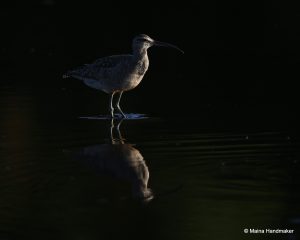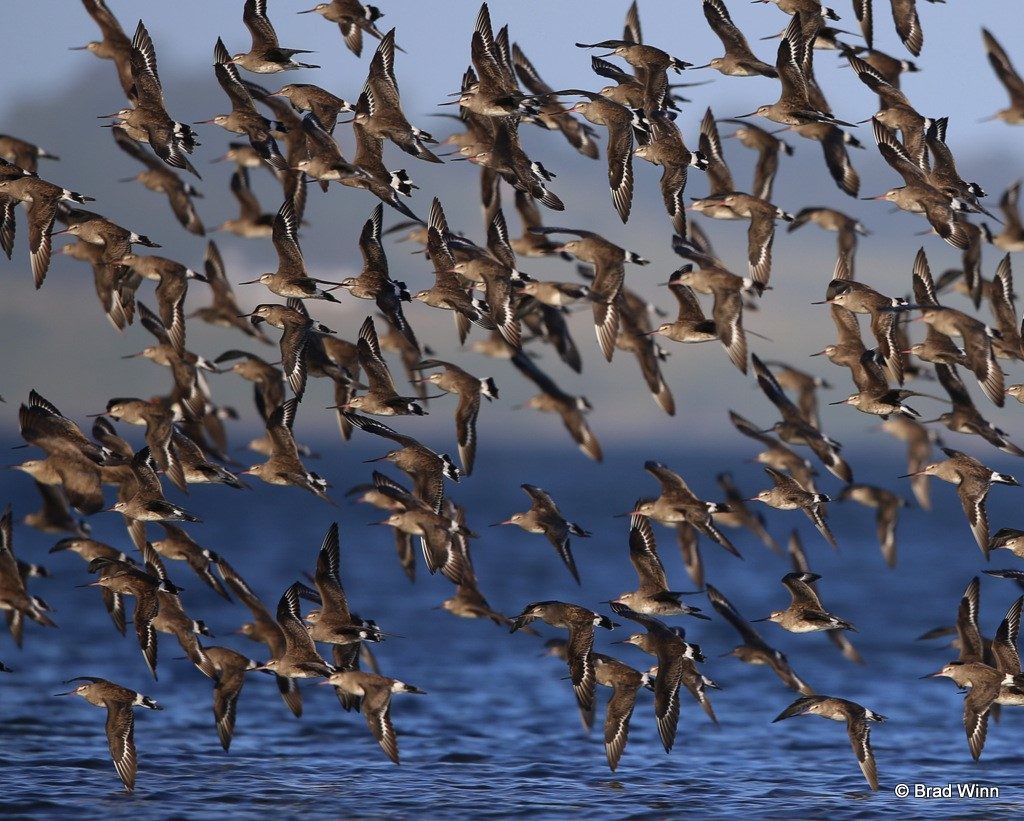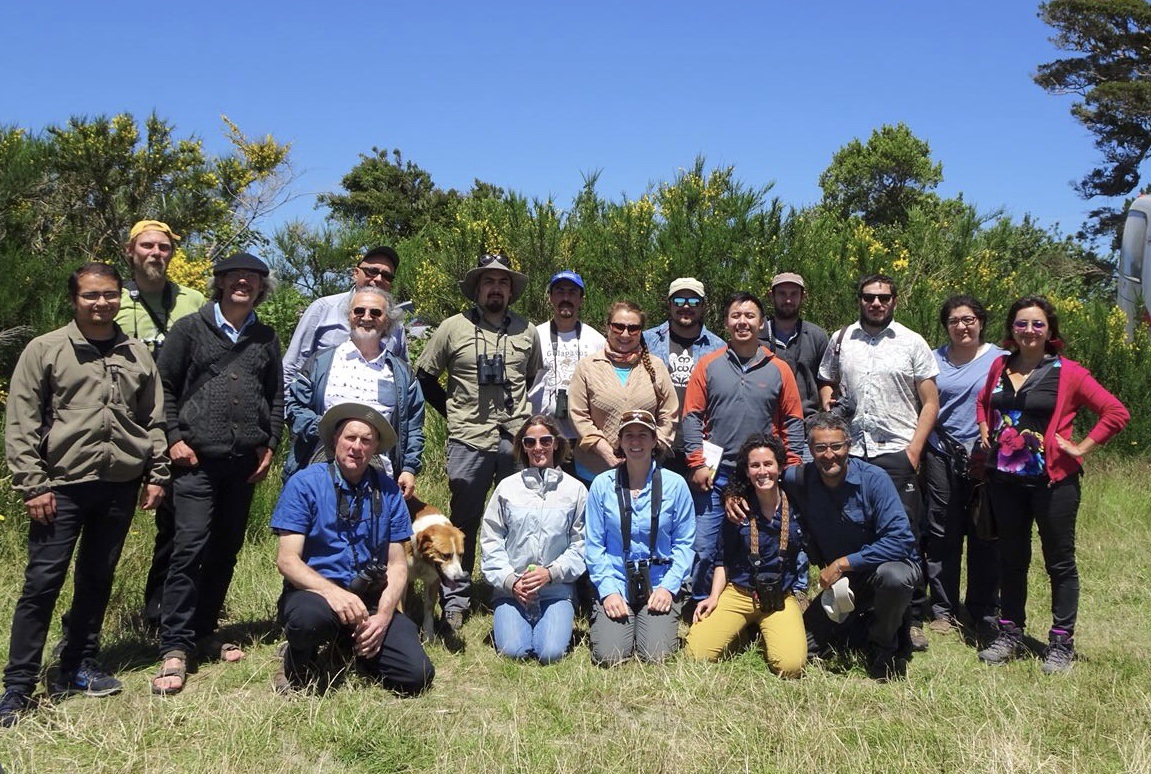From January 9th-10th 2018, Manomet’s Habitat Management Division and the Western Hemisphere Shorebird Reserve Network (WHSRN) hosted a Shorebird Ecology, Conservation, and Habitat Management Workshop on Chiloé Island in southern Chile. The workshop followed several recent Manomet workshops in South America, including Santiago, Chile in 2018, Lagoa do Peixe and Banco dos Cajuais in Brazil in 2016 and Bahía Samborombón and Bahía Blanca in Argentina in 2017. The workshop was part of Phase Four of the Migratory Shorebird Conservation Plan of Chiloé, a project being carried out by Manomet with support from the David and Lucile Packard Foundation.
The Chiloé workshop brought together partners and representatives from the WHSRN sites Maullín and Humedales Orientales de Chiloé, which is made up of ten different wetlands in the Lake Region of Chiloé Province. This network of wetlands supports 27% of the global population of Hudsonian Godwit, shorebirds that breed in Alaska and the Canadian Arctic. The Manomet team and workshop participants were frequently awestruck by groups of 3,000 – 10,000 of these incredible migrants foraging in the intertidal areas and roosting together at high tide.

The workshop was held in Ancud, with a field trip to the nearby wetlands of Caulín. The 17 participants included staff from local NGOs, municipal leaders, tourism authorities, biologists, and private landowners, some of whom had worked with WHSRN’s Diego Luna Quevedo in previous Good Governance workshops on the island and in the development of the Conservation Plan for Migratory Shorebirds in Chiloé. Group discussions centered on strategies to address the threat of loose dogs as a serious disturbance to roosting and feeding shorebirds.
The workshop coincided with a shorebird festival in the town of Curaco de Vélez, one of the WHSRN subsites on the smaller island of Quinchao. The celebration included musical performances, traditional crafts, Chiloé’s famous seafood dish curanto and field trips to view shorebirds that were attended by community members of all ages. Several participants from the workshop spoke on stage about the pride their community feels to be home to so many zarapitos (Hudsonian Godwit) every austral summer, and they publicly thanked Manomet and WHSRN for being part of the effort to protect this crucial habitat for shorebirds. The Habitat Management Team is thankful for the opportunity to attend the shorebird festival and to see our conservation partners in action.
Español

Del 9 al 10 de enero 2018, se llevó a cabo en la Isla de Chiloé (sur de Chile) el Taller “Ecología, Conservación y Manejo de Hábitat de Aves Playeras.” El taller sigue varios talleres recientes de Manomet en América del Sur, incluyendo Santiago de Chile (enter link!) en 2018, Lagoa do Peixe y Banco dos Cajuais en Brasil en 2016 y Bahía Samborombóny Bahía Blanca en Argentina en 2017. El taller fue articulado por la Oficina Ejecutiva de la RHRAP y facilitado por el equipo de Manejo de Hábitat del Manomet, como parte de la ejecución de Manomet en la cuarta fase del Plan de Conservación de Aves Playeras Migratorias de Chiloé, proceso que cuenta con el apoyo del David and Lucile Packard Foundation.
La actividad reunió a socios locales y representantes de los sitios RHRAP Maullín y Humedales Orientales de Chiloé. Cabe mecionar que la red de humedales orientales de Chiloé alberga el 27% de la población global de Limosa haemastica, aves playeras que anidan en Alaska y el árctico de Canadá. Tanto el equipo de Manomet como los participantes del taller fueron sorprendidos en terreno y con frecuencia por grupos de entre 3.000 – 10.000 de estos migrantes increíbles, alimentándose en áreas intermareales y descansando juntos durante la marea alta.
El taller se realizó en Ancud incluyendo una salida de campo a los humedales cercanos de Caulín. Participaron en la oportunidad representantes de ONGs locales, líderes locales, profesionales de los municipios, Ministerio de Medio Ambiente, biólogos y propietarios de terrenos privados, entre otros. Se llevó a cabo además una dinámica de trabajo en grupo para proponer estrategias de manejo que aborden la problemática de los perros sueltos como una perturbación seria a las aves playeras durante descanso y alimentación.
Luego del taller, parte del equipo de Manomet participó de la Feria de Aves, Artesanía y Turismo que se llevó a cabo en la localidad de Curaco de Vélez, un siti crítico para las aves playeras en la isla de Quinchao. La celebración incluyó música en vivo, artesanías tradicionales, Curanto (el plato de mariscos más clásico de Chiloé!) y salidas de campo con miembros de la comunidad de todas las edades para observar aves playeras.
Varios participantes del taller presentaron en la feria sobre el orgullo que la comunidad tiene en la cantidad de zarapitos (Limosa haemastica) que pasan el verano austral en este lugar. Públicamente agradecieron a Manomet y la RHRAP por apoyando el esfuerzo para proteger este hábitat crítico de aves playeras. El equipo de Manejo de Hábitat del Manomet está agradecido por la oportunidad de haber asistido a la feria de aves playeras y poder ver a nuestros socios locales en acción.





 Back to all
Back to all